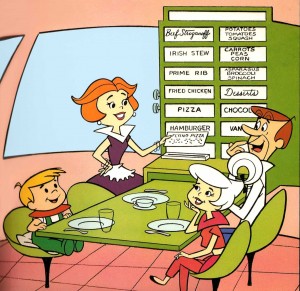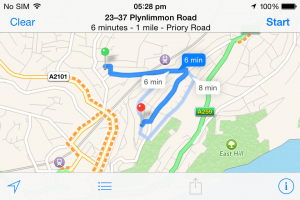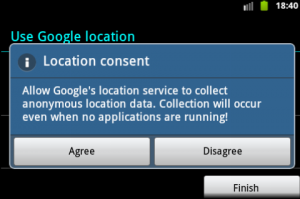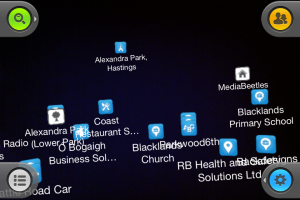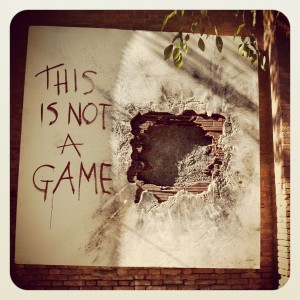
Lorenzo QUINN,
Italian Pavilion at the 54th International Art Exhibition, Venice Biennale, 2011.
Sex, food, mood, location, sleep, alertness, productivity, exercise, mental health and spirituality (Whitson, 2013): always on; always gaming; always working to be the best. The game world never stops, expanding the temporal borders of Montola’s “magic circle” (deSouza e Silva and Sutko, 2009:1). The acceptable face of pervasive surveillance is play, as long as you know the rules.
Whitson analyses the effectiveness of gamification to the quantification of everyday life by linking it to aspirational self-surveillance, participatory and social surveillance and hierarchical management surveillance. The concept of gamification as play works as long as it is participatory, be it incremental improvements in health and exercise or becoming a foursquare mayor, control and ownership over the accumulated data is key. However, the ‘black box of software’ is not transparent, nor is the commodified data free. In a process of function creep, the accumulation of intimate and long-term data of desires and behaviour could be exploited for marketing, government agencies and law enforcement. In work and education, the individual can no longer choose to quit where gamified applications facilitate the lateral surveillance of workers, generating a competitive and panoptic coercion “used to judge, rank and punish.” (Whitson, 2013:174)
Torres and Goggin (2014) expand the ‘magic circle’s’ social border in their paper on mobile social gambling and the increased normalisation of wagering as entertainment. Free from local or national jurisdiction, social gaming and mobile gambling has become play in everyday spaces. <footnote 1> “Digital wagering for play money blurs the distinction between gaming and wagering, in effect expanding the notion of gambling.” (p.96). This has serious implications for policy makers and those who are vulnerable to addiction.
The most obvious expansion of the ‘magic circle’ is location-based mobile games. Blast Theory in 2001, began to use mobile technologies to transform urban space. <footnote 2> Pac Manhattan, Brazilian frogger and London zombie chase games are examples of urban infrastructure being redefined and gamified.
-

-
world’s largest projection mapped game, London Dec2013
-

-
Parallel Kingdom is a mobile location based massively multiplayer game that places a player in a virtual world on top of the real world, based on the player’s GPS location.
Mobile technologies are blurring the borders of time, community and space facilitated by surveillance, games and play, conflating online and offline identity and making it ever harder to determine which side of the screen is which.
322wordstotal353
footnotes
1) In-app purchases for Zynga poker accounted for 12% of Facebook’s total revenues in 2011 (Torres and Goggin, 2014:102), where players send and receive gifts of poker chips (Zynga, 2013 cited in Torres and Goggin, 2014:104), as well as chatting and making friends.
2) fAR-Play uses the Layar app to allow game players to create and share their own points of interest using augmented reality. These ideas are also of benefit to the corporate world and this example shows how AR games are used to promote team-building, key messages and training.
references
de SOUZA e SILVA, A., and SUTKO, D., (2009). Merging Digital and Urban Playspaces: An Introduction to the Field. In: de Souza e Silva, A., and Sutko, D., (2009). Digital Cityscapes Merging Digital and Urban Playspaces. New York: Peter Lang Publishing. Ch.1
TORRES, César Albarrán and GOGGIN, Gerard (2014) Mobile social gambling: Poker’s next frontier. Mobile Media & Communication 2: 94 <Available at: http://mmc.sagepub.com/content/2/1/94> [Accessed 22apr2014].
WHITSON, J. R., (2013). Gaming the Quantified Self. Surveillance & Society 11(1/2): 163-176. http://www.surveillance-and-society.org <Available at: http://library.queensu.ca/ojs/index.php/surveillance-and-society/article/view/gaming> [Accessed 22apr2014].
images
Lorenzo QUINN (2011). This is not a game Italian Pavilion at the 54th International Art Exhibition, Venice Biennale, 2011. <Available at: http://www.lorenzoquinn.com/en/press> [Accessed 22apr2014].
Huddersfield Examiner (2013). World Record for the largest playable game projection. The Gadget Show and Running in the Halls: London, Victoria Dock building. <Available at: http://www.examiner.co.uk/news/pac-man-taken-whole-new-dimension-6367680> [Accessed 22apr2014].
Parallel Kingdom (2013) Screenshot of gameplay on android mobile. <Available at: http://www.parallelkingdom.com/img/theme/pages/pk_media/screenshots_page/pieces/screenshot_android_2_full.png> [Accessed 22apr2014].
extra
Layar augmented reality for googleGlass, 19Mar2014
projection mapping snake onto 3D buildings
Multi-platform console game based on the darker elements of surveillance, Watchdogs. UK Release Date 27may2014, © 2013 Ubisoft Entertainment.

